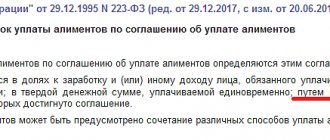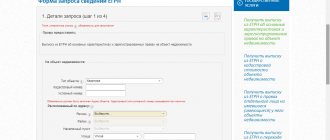The court may seize the property of the defendant in a legal dispute as security for the claim. This measure is applied at the request (petition) of the plaintiff so that the property can be foreclosed on after a decision in the case is made. The arrest can be lifted by the same court that decided to secure the claim, or by a higher court. This will require an application from the defendant to cancel interim measures or to appeal the court’s decision to accept them. The plaintiff can also file such an application, but this happens less frequently.
How to choose which application to submit
The initiator of the application of interim measures is the plaintiff. Therefore, their removal, as a rule, is carried out at the request or complaint of the defendant.
Depending on the situation, the stage of consideration of the case and other circumstances, there are the following options for how to lift the court’s seizure of the debtor’s property:
- Submit an application for cancellation of interim measures to the same court;
- Request the use of alternative (other) security that will cause less inconvenience to the defendant; or
- Appeal the court's ruling to secure the claim to a higher court.
The procedure for filing applications to lift the seizure of property is general, regardless of what kind of property we are talking about: a bank account (card), an apartment, a car. But if the rights to the property and its arrest are registered, then after the interim measures are lifted, you need to make sure that the record of the lifting of the arrest is included in the appropriate register (more on this below).
Expert opinion
Lawyer Alexander Vasiliev comments
The possibilities described above apply in civil proceedings. If the property is seized by a court as part of a criminal proceeding, the owner of the property also has the opportunity to appeal the court’s decision to seize his property in the appellate and cassation instances on the basis of Art. 127 Code of Criminal Procedure of the Russian Federation.
Don't have time to read the article?
Get an initial consultation from several companies for free
: fill out an application and the system will select suitable companies!
Start selection in a few clicks >
In order not to be bothered by complex searches for a specialist, you can find him on our service. Wherein:
- You will save time on searching, as you will find many trusted companies in one place.
- You will be able to choose a specialist according to your price: when creating an application, you specify the budget yourself, and will receive offers only from those specialists who agree to work within its framework.
The service will transfer money to the contractor only when the latter completes the work and you confirm the completion of the order.
To lift the arrest at the request of the defendant
Interim measures (in the form of seizure of a bank account or others) may be taken by the court at the request of the plaintiff. In accordance with Art. 141 of the Code of Civil Procedure of the Russian Federation, the application is considered on the day it is received by the court without notifying the defendant or other persons involved in the case.
Based on the results of consideration of the application, the court may make a ruling on securing the claim or refuse it. A copy of this determination must be sent to the defendant. The plaintiff can, on its basis, receive a writ of execution, which is then submitted to the bailiff, bank or registration authority to seize the property.
Since the issue of interim measures is resolved without the participation of the defendant, he can find out about the seizure of the account when faced with restrictions on his rights or by receiving a copy of the court ruling. Therefore, the Civil Procedure Code of the Russian Federation provides for the possibility of lifting a court-imposed arrest after the defendant has become aware of it (Article 144 of the Code of Civil Procedure of the Russian Federation).
The decision to lift the seizure of the debtor’s property is made by the same court or judge who made the decision to secure the claim. Cancellation can take place on the court’s own initiative, or at the request of other persons involved in the case. However, the defendant is most interested in this.
The defendant must write to the court an application to cancel the interim measures. It states:
- Name of the court, full name of the judge, names/full names of all participants in the process, case number,
- The grounds on which (in the defendant’s opinion) it is necessary to cancel the interim measures taken and lift the seizure of the property;
- Directly request to cancel the security.
Read more about how to write an application for the cancellation of interim measures in another material on our website (there is also a sample application for the cancellation of interim measures).
Unlike the original decision, the issue of lifting the seizure of property as security for the claim is considered at the court hearing. The persons involved in the case are notified of its date and place. However, their presence is not necessary - the issue will be considered even if the defendant, plaintiff or other persons do not appear.
Expert opinion
Lawyer Alexander Vasiliev comments
If the development of events is favorable for the defendant, the seizure imposed on the property may be lifted by the court. For example, the reason for the cancellation of interim measures may be their disproportion to the requirements stated in the statement of claim (property has been seized with a greater value than was recovered in the lawsuit).
How long does a card seizure last?
How long does it take for a bank card to be frozen, and who monitors the deadline? The FSSP resolution does not specify the period during which the account must be blocked. The blocking is valid until the debt is repaid in full or until the seizure is lifted.
What can you do with a blocked card?
There aren't many opportunities. You can transfer money to a seized card, top up your account through an ATM or through a cash desk at bank branches. Of course, it can receive a salary. But you can’t spend money from the card or use it to pay in stores. You will not be able to withdraw money from an ATM or through a bank branch.
Seized accounts (cards) can be closed at any time. This does not require permission from the bailiffs. To close an account or card, you need to contact the bank and submit an application for termination of the agreement.
Is it possible to withdraw money from a blocked card if it is prohibited to collect on the received income? It is possible, but the bailiff must give such notification to the bank. The card owner needs to submit documents confirming the intended purpose of the funds to the FSSP. Only in this case can you gain access to the money.
Replace collateral
In practice, complete abolition of interim measures and lifting of arrest is unlikely. This may happen if there is a significant change in circumstances, or if significant details previously unknown to the court are revealed.
There is a greater chance of applying for a replacement of the interim measure. In this case, the defendant provides alternative security for the claim instead of the one he wishes to cancel (for example, it is proposed to remove the seizure from one property and apply it to another).
The removal of the arrest as a replacement for security is carried out upon the application of the defendant, which is considered by the same court that adopted the original determination. The application shall indicate:
- Name of the court, full name of the judge, names/full names of all participants in the process, case number,
- Request for replacement security and proposed alternative security;
- The circumstances on which the defendant bases his request.
If a claim is filed for the recovery of funds, the defendant may deposit the amount recovered with the court. In this case, the seizure of other property will be lifted, and the money will remain in the court deposit until the final resolution of the case.
The replacement of interim measures is carried out according to a court ruling, which can be appealed by the persons participating in the case (Article 145 of the Code of Civil Procedure of the Russian Federation).
What accounts and cards can the bailiff not seize?
A representative of the FSSP has the right to seize any account and any card. When sending documents to the bank, the FSSP specialist is not at all interested in what income goes to the debtor.
But when withholding money, the restrictions listed in Art. 101 of Law No. 229-FZ. For example, it is prohibited to write off received alimony, survivor's pension, and a number of other types of income. To be able to withdraw money received from these types of income, you need to contact the FSSP and provide the relevant evidence.
Nowadays, it is much less common for banks to write off funds from income that cannot be collected. Payment documents for transfers indicate the appropriate codes for wages, alimony, pensions, social benefits and other types of income. Bank employees are required to check these codes when debiting.
When you can’t seize an apartment
There are cases in which an arrest cannot be imposed:
- The apartment chosen as the object of arrest is considered the only residence. Then it is extremely difficult to arrest her, because the person will have to leave. Especially if, in addition to the owner, his children live there. Their rights are always protected by guardianship. The fundamental right is to have housing. An exception is if the apartment was initially taken through a mortgage. Such information is reflected in detail in Rosreestr, in a bank that was once a creditor for a citizen.
- General real estate. The living space was purchased by a married citizen. Thus, it is automatically considered joint property, owned 50/50 by both spouses. If there is only one debtor, then the apartment cannot be seized. After all, the second spouse has the right to use it.
- Cost of claim. When it is small and after assessing the living space it turns out that the amounts are not comparable, the court itself will refuse the plaintiff.
- Shared ownership. For example, if a citizen owns only part of a housing property. Then only his share will be seized. The rights of other owners will remain the same.
- The owner is not a citizen, but another. They can be arrested if the property has become the cause of a crime or some criminal acts have been committed in it.
- It is impossible to seize a land plot when there is a building there, which is actually the only housing where the debtor lives.
- The property that the debtor uses to carry out his professional activities is also not seized. For example, an apartment he bought, which became an office or a store.
Hence the conclusion: in order to avoid all the troubles of seizure of property, it is better to pay off all your debts on time.
Your rating of the article
Procedure for appealing
To challenge, you need to go to the district court with a claim. Documents confirming the position of the plaintiff are attached to the application. It is extremely important for the plaintiff to find a basis for the challenge. The more just this reason is and the better it is supported by evidence, the greater the chances of winning the case. To find legal grounds, you can contact a lawyer. Let's look at their approximate list:
- Violation of terms of arrest.
- Seizure of property that is not subject to restrictions.
- Errors were made when drawing up the deduction report.
- Errors when completing the inventory protocol.
- Exceeding official authority.
- Seizure of those valuables that do not belong to the debtor.
The reason may be a common error in the documents accompanying the withholding. This reason for lifting the lien remains valid even if the lien was otherwise perfectly legal.
FOR YOUR INFORMATION! You can challenge the retention of not the entire list of property, but only part of it.
IMPORTANT! An alternative measure to remove the lien is to declare bankruptcy. Declaration of insolvency automatically lifts the arrest. However, this does not mean that the debtor will be able to freely dispose of the property.
Basic rules for going to court
The specifics of going to court are discussed in Article 144 of the Code of Civil Procedure. When filing a claim, you must follow these rules:
- The application can only be submitted by the owner of the items that have been seized. The exception is cases when the owners are several individuals or legal entities.
- A claim can be filed by a third party only if there is a power of attorney certified by a notary. In this case, this third party becomes the representative of the plaintiff.
- You need to pay the state fee.
The court considers the circumstances of the case and examines the arguments presented. The case will be decided at the hearing.
Documenting
You must include the following information in your statement of claim:
- The name of the court in which the claim is filed.
- Information about the plaintiff: name of the legal entity, address, contact information.
- Grounds for lifting the arrest.
The following documents must be attached to the claim:
- Document identifying the plaintiff. These may be copies of a passport or constituent documents.
- Act with the decision to arrest.
- Documents confirming ownership.
The claim is also accompanied by documents confirming the grounds. For example, these may be documents proving that the property does not belong to the debtor.
FOR YOUR INFORMATION! The title of the claim must be standard. This is the name of the court, information about the debtor, and the name of the application. The main part of the application can be arbitrary. However, the plaintiff must clearly present his claims and demands.
IMPORTANT! A lien may be placed on the property of a person who is not the debtor. In this case, the person who is the owner must go to court.
Features of the case in court
The decision in the case is determined not only by the factual circumstances, but also by the correctness of the claim. The plaintiff may choose the wrong course of action. For example, the lien was indeed illegal, but the complaint sets out the basis on which the lien cannot be lifted. The court makes its decision based on the arguments presented by the plaintiff.
Such cases are usually considered within 3 months. If the statement of claim is not considered by the judicial authority for a long time, you can send the claim to the chairman. He must make his determination within 5 days.
If the seized property is pledged?
It is very common when a car is purchased, registered, and then the car is seized and they come and take the car, justifying this by the fact that the car is seized and the previous owner does not pay the loan.
Common situation? I think yes, everyone has heard similar stories and there is an opinion that nothing can be done, but this is not so.
If the buyer is recognized as a bona fide purchaser, then the pledge of the car will be considered terminated, the seizure will be lifted and the car will remain with the buyer.
If the new owner is not recognized as a bona fide purchaser, then the situation will not be in his favor.
A buyer may be considered a bona fide purchaser if, at the time of purchase, the buyer did not know and could not know about the restrictions imposed on the vehicle. This means that the buyer, before purchasing, officially checked the car in the Register of Pledge Notifications, and also, at the time of concluding the sale and purchase agreement and transferring the car from the seller to the buyer, there were no restrictions (encumbrances). There were no enforcement proceedings against the seller. At the time of the transaction, the buyer must have an extract from the register of pledged property in his hands, according to which there are no notifications of pledge in relation to the car. This document will be key in the consideration of the case, because it confirms that the buyer took care and checked the car before purchasing, and since there was no official information about the collateral at the time of purchase (which is confirmed by the extract), the buyer could not know about the existing collateral, which he does its bona fide purchaser.
An unscrupulous purchaser is one who, knowing about the possibility of a car being pledged, did not check to see if the car was in the register of pledged property, thereby depriving himself of the opportunity to refuse such a purchase and, despite the opportunity to learn about the restrictions, did not take advantage of this opportunity, and bought a car.
That is, if at the time of purchase, there was information in the Federal Notary Chamber about the pledge of the car in the register of notifications of pledge of movable property, but the buyer did not request it and check the car, then in the event of an arrest due to the car being pledged, such a buyer is recognized as not conscientious and his car is confiscated.
Also, to prove the buyer’s good faith, information from the traffic police MREO will help. Where it will be confirmed that at the time of re-registration of the car, on a specific date, in the available electronic records of the State Traffic Inspectorate, there was no information about the prohibitions imposed on performing registration actions with the car, as well as about its being on the wanted list. This fact will be confirmed by the successfully provided service of re-registration of the specified vehicle due to a change in ownership.
Also, you must provide all available documents, with stamps from the traffic police, issued there.
As I said above, a bona fide purchaser is a person who, at the time of purchase, did not and could not have known that a ban would be imposed on the car.
According to Article 352 of the Civil Code of the Russian Federation, the pledge is terminated: if the pledged property was acquired for compensation by a person who did not know and should not have known that this property was the subject of a pledge.
In confirmation of my words, court decision No. 2-189/2019 (2-5146/2018;) ~ M-5071/2018, Central District Court of Barnaul, judge Dmitry Yuryevich Kolesnikov .
The decision describes exactly the situation with the illegal seizure of a car from the new owner after purchase. The court made a decision to cancel the arrest, terminate the lien on the car and return the car to a new bona fide purchaser.
Another situation is when a car or other property is pledged and it is seized as part of enforcement proceedings.
What matters here is when the arrest was made and when the bail agreement was concluded. If the pledge agreement was concluded before the arrest was imposed, then in this case, the arrest can be lifted in court.
The thing is that, according to Part 3.1 of Art. 80 of the Federal Law “On Enforcement Proceedings”, the seizure of the pledged property in order to secure the claim of a claimant who does not have an advantage over the pledgee in satisfying the claims is not allowed.
This means that if the arrest of the pledged property was made not in favor of the pledgee, but in favor of a third party who does not have an advantage over the pledgee, then in this case the arrest will not have legal force and can be canceled in court.
That is, if, according to the pledge agreement, the pledge holder is First Company LLC, and the collateral property was seized as part of enforcement proceedings according to the requirements of Second Company LLC, then such arrest will be considered illegal. It will be recognized as illegal under Part 3.1, Article 80, Federal Law “On Enforcement Proceedings”, since Second Company LLC does not have an advantage over the mortgagee of First Company LLC.
As I said, it is important that the collateral agreement be concluded before the property is seized. If the arrest is imposed before the property under the agreement has been pledged, then the pledgee will not have an advantage, since the seizure of the property was imposed before the pledge agreement was concluded and the property will be sold at auction, as a result the pledgee will be left without subject of collateral.
If such a situation occurs, then in order to release the pledged property from seizure, the pledgee himself, and not the debtor, must apply to the court with a claim to release the property from seizure and exclude it from the inventory, since in the event of seizure of the pledged property, the rights of the pledgee are violated .
By virtue of paragraph 2 of paragraph 2 of Article 347 of the Civil Code of the Russian Federation, the pledgee also has the right to demand the release of the pledged property from seizure (exclusion from the inventory) in connection with foreclosure on it through enforcement proceedings.
But I repeat once again, he can demand this only if the pledge agreement was concluded earlier than the seizure of the pledged property was imposed.
Nuances
When the arrest cannot be lifted, even after the owner has fulfilled all requirements. For example, a citizen fell into debt and stopped paying alimony (or did not start paying it at all). Bailiffs visited his living space and arrested her. After a while, the defendant citizen paid off the accumulated alimony debt and continues to make monthly payments.
However, his request to lift the arrest was rejected. Why? Here you need to take a closer look at the list of required documents and study the intricacies of the process. Perhaps the reason is the loss of some paper or the negligence of workers. Or there is a court decision, but it has not undergone mandatory registration.
Documents for registration of the received court decision:
- court decision (original certified by a judge);
- owner's passport.
They are provided to employees of the relevant authorities, and subsequently they will lift the arrest, which will be reflected in the Rosreestr system.
What to do if there are two arrests? For example, they are imposed simultaneously by a court decision and the actions of bailiffs. This happens if, at the time of consideration of the case by the court, a separate petition was sent with a request to seize it in advance, without waiting for a ready court decision. Then the owner will have to submit two similar applications, addressing them to two authorities. Firstly, to the court that actually made the decision. Secondly, in the FSPP, where the bailiff who previously imposed the arrest is registered.
What to do if the seized property was sold anyway? Then the new owner gets all the problems along with the living space. He will have to write a statement asking for the burden to be lifted.
Important: the arrest is lifted by the court only after the defendant fulfills all the requirements stated by the plaintiff.
The process of seizing property
The procedure is quite simple. A person writes a petition indicating a request for arrest. The addressee of the petition is the court. The arrest itself will be made later, after a court decision.
For example, a bank client becomes a debtor. He asks the bank to grant him a deferment. Usually the financial institution agrees, but if the loan is large (car loan, mortgage) and the debtor’s property serves as collateral, the bank can submit an application for insurance to have the bailiffs temporarily seize the property. As soon as the debtor has fulfilled all its obligations, the bank withdraws the application. After confirmation by the court, the arrest is lifted. The judicial body itself decides whether to arrest or not. He studies the credit history and the amount of debt. If it is small, then the bank’s application may be rejected.
Checking the presence/absence of a lien is considered mandatory when implementing the sale of living space. It is not difficult to carry out, just visit the MFC or Rosreestr and get an extract from the Unified State Register there. There, all the basic data regarding the property will be visible.
Important: receive a fresh statement, it is advisable to do this on the day of the planned transaction.
Is it possible to sell a car that is seized?
A vehicle may end up under arrest by bailiffs for a number of reasons. In particular:
- due to debts on loans, alimony, utility bills, traffic police fines, etc.;
- during divorce proceedings, if both spouses claim ownership of the car, and the case is resolved in court;
- if the car is involved in a criminal case in one way or another.
In accordance with the current legislation, it is impossible to sell a car that is in the possession of bailiffs. The owner of the seized property is deprived of the right to dispose of it at his own discretion. However, there are several ways to legally sell a vehicle that is under arrest by the court.
Seizure on real estate
Often, the property seized is the living space where the owner permanently resides.
Arrest is an official procedure accompanied by the execution of a number of papers, after which the owner loses some of his rights.
He will not be able to:
- present;
- bequeath;
- exchange;
- sell;
Thus, the arrest concerns precisely the possibility of carrying out any transactions.
Who has the right to set such restrictions? The tax service - if the owner is a malicious debtor, the investigative authorities - when the apartment appears in the case, the bailiffs - in the process of conducting legal proceedings.
Sometimes arrests are made by customs officials.
The owner can return full rights only if the previously imposed seizure is officially lifted. If a person owns not all, but part of the property, then it is this part that is seized. The rights of the remaining owners remain unchanged.







